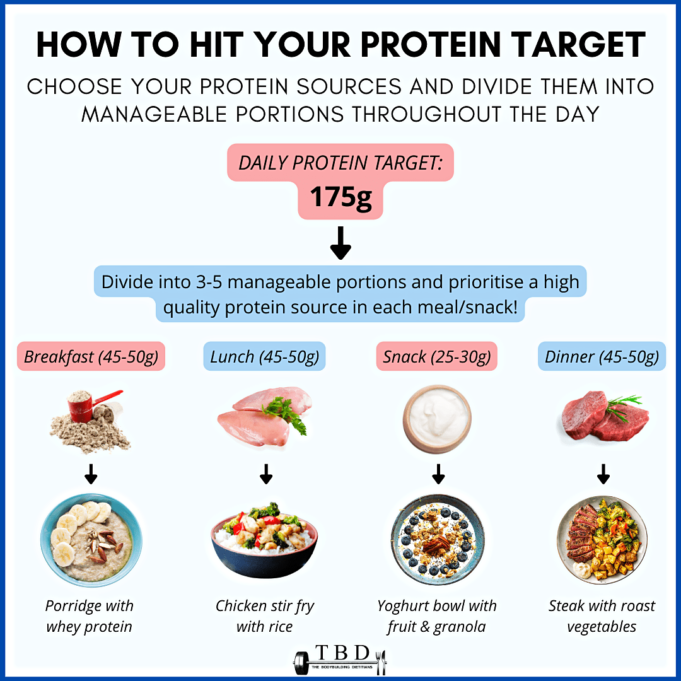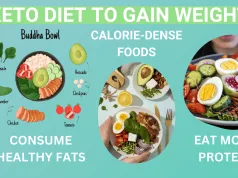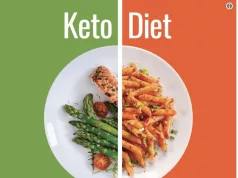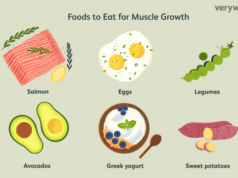What does high protein diet do – What does a high protein diet do? It’s a question that often pops up when considering dietary changes for weight loss, muscle gain, or even managing specific health conditions. A high protein diet, as the name suggests, involves consuming a significantly larger amount of protein than the typical diet. This can be beneficial for various aspects of health, but it’s important to understand both the potential benefits and risks before embarking on this dietary approach.
The concept of a high protein diet has been around for a while, but recent research has shed light on its specific effects on the body. This includes its impact on weight management, muscle growth, satiety, and even blood sugar control. While a high protein diet can be a valuable tool for achieving certain health goals, it’s crucial to approach it with caution and under the guidance of a qualified healthcare professional. This ensures that you’re consuming the right amount of protein, balancing it with other essential nutrients, and avoiding potential risks associated with excessive protein intake.
What is a High Protein Diet?
A high protein diet is a dietary approach that emphasizes consuming a higher-than-usual proportion of protein relative to carbohydrates and fats. This doesn’t necessarily mean excluding other macronutrients entirely; it simply means prioritizing protein as a significant component of your daily intake.
Recommended Daily Protein Intake, What does high protein diet do
The recommended daily protein intake varies depending on factors such as age, activity level, and overall health goals.
- General population: The recommended daily protein intake for adults is 0.8 grams per kilogram of body weight, or 0.36 grams per pound. For example, a 150-pound individual would need approximately 54 grams of protein per day.
- Athletes: Athletes require more protein than sedentary individuals due to the increased demands placed on their muscles. The recommended daily protein intake for athletes ranges from 1.2 to 1.7 grams per kilogram of body weight, or 0.55 to 0.77 grams per pound. This can vary depending on the type of training, intensity, and duration.
- Weight loss seekers: A high protein diet can be beneficial for weight loss as protein helps increase satiety, reducing overall calorie intake. For weight loss, the recommended protein intake is often around 1.2 to 1.6 grams per kilogram of body weight, or 0.55 to 0.73 grams per pound.
- Individuals with specific health conditions: Certain health conditions, such as diabetes, kidney disease, or liver disease, may require adjustments to protein intake. Consulting with a healthcare professional is crucial for personalized dietary recommendations.
Benefits of a High Protein Diet
A high protein diet offers several potential benefits, particularly for specific individuals and goals.
- Muscle growth and repair: Protein is essential for muscle growth and repair, making it crucial for athletes and individuals engaging in regular exercise. After a workout, protein intake helps rebuild and strengthen muscle fibers, promoting muscle hypertrophy and overall performance.
- Weight management: High protein diets can be effective for weight loss and maintenance. Protein increases satiety, reducing hunger and cravings, leading to lower calorie intake. It also boosts metabolism, helping burn more calories throughout the day.
- Improved blood sugar control: Protein helps regulate blood sugar levels, making it beneficial for individuals with diabetes. It slows down the absorption of carbohydrates, preventing rapid spikes and crashes in blood sugar.
- Increased bone health: While calcium is crucial for bone health, protein also plays a vital role in maintaining bone density. Adequate protein intake helps prevent bone loss and promotes bone growth.
- Enhanced cognitive function: Protein is essential for the production of neurotransmitters, which are chemical messengers that play a crucial role in brain function. A high protein diet can contribute to improved cognitive function, memory, and focus.
Benefits of a High Protein Diet: What Does High Protein Diet Do
A high protein diet can offer several health benefits, impacting various aspects of your well-being, from weight management to muscle health.
Impact on Weight Management and Weight Loss
A high protein diet can be a valuable tool for weight management and weight loss. Here’s how:
- Increased satiety and reduced hunger pangs: Protein is more satiating than carbohydrates or fats, meaning it keeps you feeling fuller for longer. This can help reduce overall calorie intake, leading to weight loss.
- Boost metabolism and calorie burn: Protein requires more energy to digest than carbohydrates or fats, leading to a higher thermic effect of food (TEF). This means your body burns more calories simply by processing the protein you consume.
- Preservation of lean muscle mass: During weight loss, it’s common to lose both fat and muscle mass. A high protein diet helps preserve muscle mass, which is crucial for maintaining a healthy metabolism and body composition.
Muscle Growth and Repair
Protein is essential for building and repairing muscle tissue. This is particularly important for athletes, fitness enthusiasts, and individuals engaged in regular exercise.
- Increased muscle protein synthesis: Protein provides the building blocks for muscle growth. A high protein intake stimulates muscle protein synthesis, leading to greater muscle mass and strength.
- Enhanced recovery from exercise: Protein helps repair muscle tissue damaged during exercise, promoting faster recovery and reducing muscle soreness. This allows for more frequent and intense training sessions.
Maintaining Satiety and Reducing Hunger Pangs
Protein plays a vital role in regulating hunger hormones and keeping you feeling full.
- Increased levels of GLP-1 and PYY: These hormones are known to promote satiety and reduce appetite. Protein consumption has been shown to increase their levels in the body.
- Reduced levels of ghrelin: This hormone stimulates hunger. Protein intake has been shown to suppress ghrelin levels, contributing to a feeling of fullness and reduced cravings.
Improved Blood Sugar Control
Research suggests that a high protein diet can be beneficial for individuals with diabetes.
- Stabilized blood sugar levels: Protein slows down the absorption of glucose from the gut, leading to a more gradual rise in blood sugar levels after meals.
- Increased insulin sensitivity: Protein can improve insulin sensitivity, allowing the body to use glucose more effectively and regulate blood sugar levels better.
Potential Risks and Side Effects of a High Protein Diet
While a high protein diet can offer various benefits, it’s crucial to be aware of the potential risks and side effects associated with excessive protein intake. Consuming too much protein can strain your kidneys, lead to dehydration, and cause nutrient imbalances.
Kidney Strain
Consuming excessive protein can put a strain on your kidneys, as they work harder to filter out waste products. This is because protein breakdown produces nitrogenous waste products that the kidneys must eliminate. While a healthy individual’s kidneys can handle moderate protein intake, prolonged high protein intake can increase the risk of kidney damage, particularly in people with pre-existing kidney conditions.
Dehydration
A high protein diet can increase your need for water. This is because protein breakdown requires water, and a high protein intake can lead to increased urine production. If you don’t drink enough fluids, you may become dehydrated, which can lead to various health problems, including fatigue, headaches, and constipation.
Nutrient Imbalances
A high protein diet may lead to nutrient imbalances if you don’t pay attention to your overall dietary intake. For example, a diet high in protein may be low in fiber, which can lead to constipation. Additionally, a high protein diet may be low in certain vitamins and minerals, such as calcium and vitamin C.
Potential Side Effects
- Constipation: High protein diets are often low in fiber, which can lead to constipation. This is because fiber helps to bulk up stools and promote regular bowel movements.
- Bad Breath: When your body breaks down protein, it produces ammonia, which can contribute to bad breath.
- Digestive Discomfort: Some people may experience digestive discomfort, such as bloating, gas, and stomach cramps, when they consume a high protein diet. This is because protein can be difficult to digest, and some people may not have enough digestive enzymes to break it down properly.
Managing Risks and Side Effects
- Stay Hydrated: Ensure you drink plenty of water throughout the day to help flush out waste products and prevent dehydration.
- Choose a Balanced Diet: Include a variety of foods in your diet, including fruits, vegetables, and whole grains, to ensure you’re getting a balanced intake of nutrients.
- Monitor Your Protein Intake: Consult with a healthcare professional to determine an appropriate protein intake for your individual needs.
- Listen to Your Body: If you experience any negative side effects from a high protein diet, reduce your protein intake or consult with a healthcare professional.
Planning a High Protein Diet
A high protein diet can be beneficial for various reasons, but it’s crucial to plan it carefully to ensure it’s balanced and meets your individual needs. Here’s a guide to help you create a healthy and effective high protein diet plan.
Creating a Balanced High Protein Diet Plan
To create a balanced high protein diet plan, it’s essential to focus on incorporating a variety of protein-rich foods from different food groups. This approach helps you obtain a wider range of nutrients and avoid potential deficiencies.
- Prioritize lean protein sources: Opt for lean protein sources like poultry without skin, fish, beans, lentils, tofu, and low-fat dairy products. These options are generally lower in saturated fat and calories, making them healthier choices.
- Include a variety of protein sources: Aim to incorporate different protein sources into your diet throughout the week to ensure you’re getting a wide range of essential amino acids. For instance, include fish on one day, chicken on another, and beans on another day.
- Control portion sizes: While increasing your protein intake, it’s essential to pay attention to portion sizes to avoid consuming excessive calories. A good rule of thumb is to aim for 4-6 ounces of protein per meal.
- Focus on whole foods: Prioritize whole, unprocessed foods like fruits, vegetables, whole grains, and nuts. These foods are rich in fiber, vitamins, minerals, and antioxidants, which are essential for overall health.
- Limit processed foods: Processed foods are often high in unhealthy fats, sugar, and sodium. Minimize your intake of processed meats, fast food, sugary drinks, and packaged snacks.
- Stay hydrated: Drinking plenty of water is crucial, especially when increasing your protein intake. Protein metabolism requires water, and staying hydrated helps your body function optimally.
Sample Meal Plan
Here’s a sample meal plan incorporating a variety of protein-rich foods from different food groups:
- Breakfast: Oatmeal with berries and a scoop of protein powder
- Lunch: Grilled chicken salad with mixed greens, avocado, and a light vinaigrette
- Dinner: Salmon with roasted vegetables and brown rice
- Snacks: Greek yogurt with fruit, almonds, or a hard-boiled egg
Incorporating Protein Throughout the Day
Here are some tips for incorporating protein into meals and snacks throughout the day:
- Start your day with protein: Include a source of protein in your breakfast, such as eggs, Greek yogurt, or protein powder. This helps you feel fuller for longer and can help manage blood sugar levels.
- Add protein to snacks: Opt for protein-rich snacks like nuts, seeds, cheese, or hard-boiled eggs. This can help curb cravings and provide a sustained energy boost.
- Choose protein-rich sides: Instead of traditional sides like mashed potatoes or rice, consider protein-rich options like lentils, beans, or quinoa.
- Experiment with protein sources: Don’t be afraid to try new protein sources. Experiment with different types of fish, poultry, beans, and lentils to find what you enjoy.
Consulting a Registered Dietitian or Nutritionist
It’s highly recommended to consult with a registered dietitian or nutritionist to create a personalized high protein diet plan. They can help you determine the appropriate amount of protein you need based on your individual needs, goals, and health conditions.
Food Sources of Protein
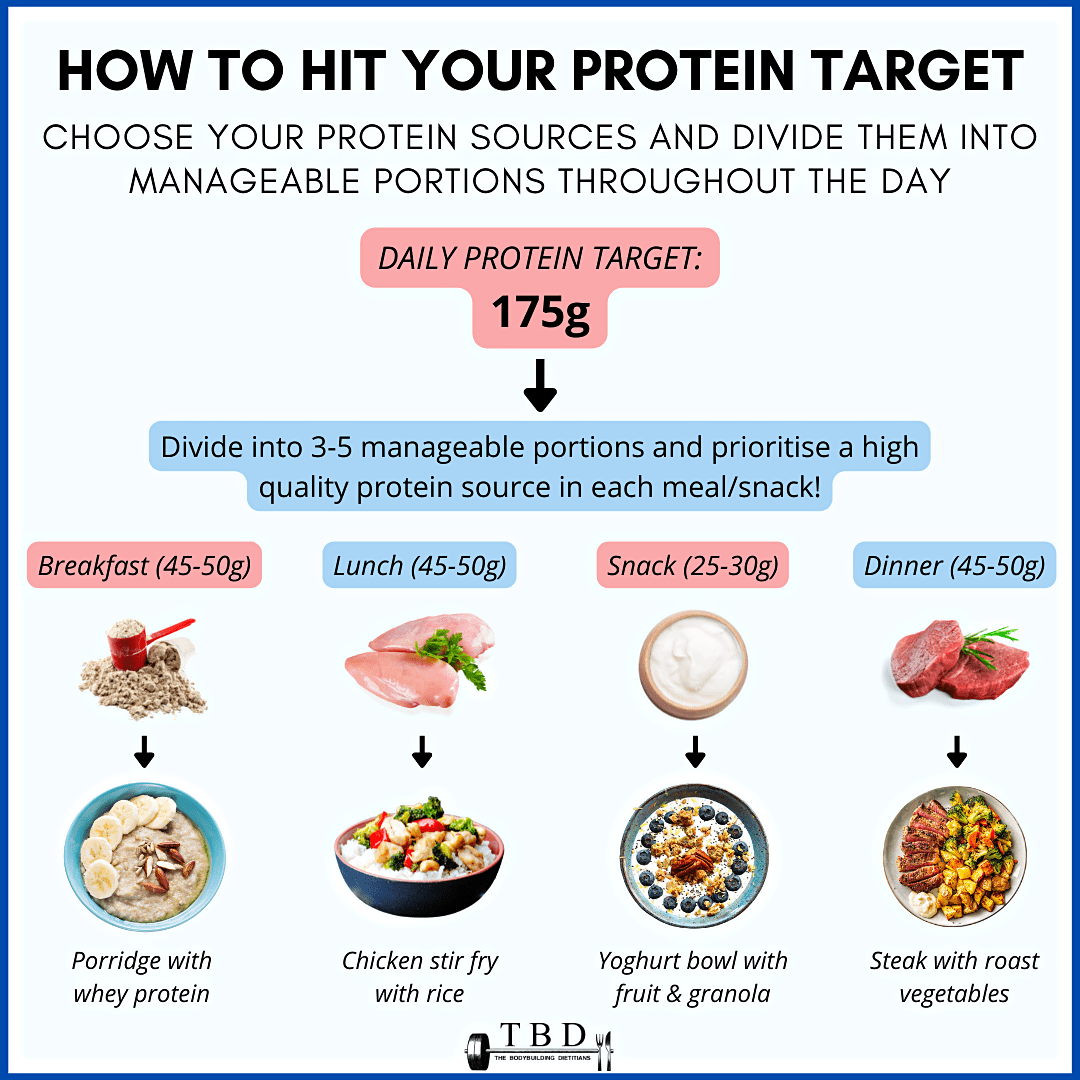
A high-protein diet requires consuming a variety of protein-rich foods to meet your daily needs and ensure a balanced intake of essential nutrients.
Meat, Poultry, and Fish
Meat, poultry, and fish are excellent sources of complete protein, meaning they contain all nine essential amino acids your body needs.
| Food | Serving Size | Protein (grams) |
|---|---|---|
| Beef (lean ground) | 3 ounces | 22 |
| Chicken Breast (skinless) | 3 ounces | 27 |
| Salmon (wild-caught) | 3 ounces | 18 |
| Tuna (canned in water) | 3 ounces | 20 |
Meat and poultry can be high in saturated fat, so it’s important to choose lean cuts and prepare them with healthy cooking methods. Fish is a good source of omega-3 fatty acids, which are beneficial for heart health.
Dairy Products
Dairy products are another excellent source of protein.
| Food | Serving Size | Protein (grams) |
|---|---|---|
| Milk (skim) | 1 cup | 8 |
| Yogurt (plain, non-fat) | 1 cup | 10 |
| Cheese (cheddar) | 1 ounce | 7 |
Dairy products are also a good source of calcium, which is essential for strong bones.
Legumes
Legumes, such as beans, lentils, and peas, are a great source of plant-based protein.
| Food | Serving Size | Protein (grams) |
|---|---|---|
| Black Beans | 1/2 cup cooked | 8 |
| Lentils | 1/2 cup cooked | 9 |
| Peas (green) | 1/2 cup cooked | 4 |
Legumes are also a good source of fiber, which can help regulate digestion and lower cholesterol levels.
Nuts and Seeds
Nuts and seeds are a good source of protein, healthy fats, and fiber.
| Food | Serving Size | Protein (grams) |
|---|---|---|
| Almonds | 1/4 cup | 6 |
| Chia Seeds | 2 tablespoons | 5 |
| Pumpkin Seeds | 1/4 cup | 5 |
Nuts and seeds can be a healthy snack or added to meals for a boost of protein.
Eggs
Eggs are a complete protein source and a good source of choline, which is important for brain health.
One large egg contains about 6 grams of protein.
Eggs are also a good source of vitamins and minerals, including vitamin D, riboflavin, and selenium.
Other Sources
Other sources of protein include:
- Tofu
- Tempeh
- Edamame
- Quinoa
- Spirulina
These foods are all good sources of protein and can be incorporated into a variety of meals and snacks.
High Protein Diet Recipes
A high-protein diet can be delicious and satisfying. Here are some high-protein recipe ideas for breakfast, lunch, dinner, and snacks. These recipes are designed to be both tasty and nutritious, ensuring you get enough protein to support your fitness goals and overall health.
Breakfast Recipes
These high-protein breakfast recipes will help you start your day off right, keeping you feeling full and energized until lunchtime.
- High-Protein Oatmeal: This recipe combines the classic oatmeal with protein powder and nuts for a filling and satisfying breakfast.
- Ingredients: 1/2 cup rolled oats, 1 scoop protein powder (vanilla or chocolate), 1/4 cup milk (dairy or non-dairy), 1/4 cup water, 1/4 cup berries (frozen or fresh), 1/4 cup chopped nuts (almonds, walnuts, or pecans), 1 teaspoon honey or maple syrup (optional)
- Preparation Time: 5 minutes
- Cooking Time: 2-3 minutes
- Serving Size: 1 serving
- Instructions: Combine oats, protein powder, milk, and water in a saucepan. Bring to a boil, then reduce heat and simmer for 2-3 minutes, stirring occasionally. Top with berries, nuts, and honey or maple syrup (optional).
[Image: A bowl of oatmeal with berries, nuts, and a scoop of protein powder on top.]
- Egg White Omelet: This light and fluffy omelet is packed with protein and is a great way to start your day.
- Ingredients: 4 egg whites, 1/4 cup chopped vegetables (onions, peppers, spinach), 1/4 cup shredded cheese (cheddar, mozzarella, or Swiss), salt and pepper to taste
- Preparation Time: 5 minutes
- Cooking Time: 5 minutes
- Serving Size: 1 serving
- Instructions: Whisk egg whites in a bowl until frothy. Heat a nonstick skillet over medium heat. Pour egg whites into the skillet and cook for 2-3 minutes, or until set. Sprinkle with vegetables and cheese. Fold omelet in half and cook for another minute. Season with salt and pepper.
[Image: A fluffy egg white omelet with vegetables and cheese.]
- Greek Yogurt Parfait: This parfait is a delicious and easy way to get a healthy dose of protein and probiotics.
- Ingredients: 1 cup Greek yogurt, 1/2 cup granola, 1/4 cup berries (frozen or fresh), 1/4 cup chopped nuts (almonds, walnuts, or pecans)
- Preparation Time: 5 minutes
- Cooking Time: None
- Serving Size: 1 serving
- Instructions: Layer Greek yogurt, granola, berries, and nuts in a glass or bowl. Enjoy immediately or refrigerate for later.
[Image: A layered parfait with Greek yogurt, granola, berries, and nuts.]
Lunch Recipes
These high-protein lunch recipes will keep you feeling full and satisfied until dinner.
- Tuna Salad Sandwich: This classic sandwich is a great source of protein and healthy fats.
- Ingredients: 2 slices whole-wheat bread, 1 can tuna (packed in water), 1/4 cup mayonnaise, 1/4 cup chopped celery, 1/4 cup chopped onion, 1 tablespoon chopped parsley, salt and pepper to taste
- Preparation Time: 10 minutes
- Cooking Time: None
- Serving Size: 1 serving
- Instructions: Combine tuna, mayonnaise, celery, onion, parsley, salt, and pepper in a bowl. Spread tuna salad on bread and enjoy.
[Image: A tuna salad sandwich on whole-wheat bread.]
- Chicken Caesar Salad: This classic salad is a great source of protein and healthy fats.
- Ingredients: 4 oz grilled chicken breast, 1 cup romaine lettuce, 1/4 cup Parmesan cheese, 1/4 cup Caesar dressing, 1 tablespoon croutons
- Preparation Time: 10 minutes
- Cooking Time: 15 minutes (for chicken)
- Serving Size: 1 serving
- Instructions: Grill chicken breast until cooked through. Chop chicken into bite-sized pieces. Combine lettuce, Parmesan cheese, Caesar dressing, and croutons in a bowl. Add chicken and toss to combine.
[Image: A chicken Caesar salad with grilled chicken, romaine lettuce, Parmesan cheese, Caesar dressing, and croutons.]
- Black Bean Burgers: These veggie burgers are a delicious and healthy alternative to traditional beef burgers.
- Ingredients: 1 can black beans (rinsed and drained), 1/2 cup cooked quinoa, 1/4 cup chopped onion, 1/4 cup chopped bell pepper, 1 egg, 1/4 cup breadcrumbs, 1 tablespoon chili powder, 1 teaspoon cumin, salt and pepper to taste
- Preparation Time: 15 minutes
- Cooking Time: 10 minutes
- Serving Size: 2 servings
- Instructions: Combine all ingredients in a bowl and mix well. Form mixture into two patties. Cook patties in a nonstick skillet over medium heat for 5-7 minutes per side, or until cooked through.
[Image: Two black bean burgers on a plate.]
Dinner Recipes
These high-protein dinner recipes are hearty and satisfying, perfect for a delicious and nutritious meal.
- Salmon with Roasted Vegetables: This simple and elegant dish is a great source of protein and omega-3 fatty acids.
- Ingredients: 1 salmon fillet (4 oz), 1 cup chopped vegetables (broccoli, carrots, zucchini), 1 tablespoon olive oil, salt and pepper to taste
- Preparation Time: 10 minutes
- Cooking Time: 15-20 minutes
- Serving Size: 1 serving
- Instructions: Preheat oven to 400 degrees F (200 degrees C). Toss vegetables with olive oil, salt, and pepper. Spread vegetables on a baking sheet and roast for 15-20 minutes, or until tender. Season salmon fillet with salt and pepper. Place salmon fillet on a baking sheet and bake for 10-12 minutes, or until cooked through. Serve salmon with roasted vegetables.
[Image: A salmon fillet with roasted vegetables on a plate.]
- Chicken Stir-Fry: This quick and easy stir-fry is a great way to get a healthy dose of protein and vegetables.
- Ingredients: 4 oz chicken breast (cut into bite-sized pieces), 1 cup chopped vegetables (broccoli, carrots, onions, peppers), 1/4 cup soy sauce, 1 tablespoon honey, 1 teaspoon sesame oil
- Preparation Time: 10 minutes
- Cooking Time: 10 minutes
- Serving Size: 1 serving
- Instructions: Heat sesame oil in a wok or large skillet over medium heat. Add chicken and cook for 5-7 minutes, or until cooked through. Add vegetables and cook for another 5-7 minutes, or until tender-crisp. Combine soy sauce and honey in a small bowl. Pour sauce over chicken and vegetables and stir to combine. Serve immediately.
[Image: A chicken stir-fry with vegetables in a wok.]
- Lentil Soup: This hearty soup is a great source of protein and fiber.
- Ingredients: 1 cup lentils (rinsed), 4 cups vegetable broth, 1 chopped onion, 2 carrots (chopped), 2 celery stalks (chopped), 1 teaspoon cumin, 1 teaspoon curry powder, salt and pepper to taste
- Preparation Time: 10 minutes
- Cooking Time: 30 minutes
- Serving Size: 4 servings
- Instructions: Combine lentils, broth, onion, carrots, celery, cumin, curry powder, salt, and pepper in a large pot. Bring to a boil, then reduce heat and simmer for 30 minutes, or until lentils are tender. Serve hot.
[Image: A bowl of lentil soup with a spoon.]
Snack Recipes
These high-protein snack recipes will help you stay full and satisfied between meals.
- Greek Yogurt with Berries: This simple and healthy snack is a great source of protein and probiotics.
- Ingredients: 1/2 cup Greek yogurt, 1/4 cup berries (frozen or fresh)
- Preparation Time: 2 minutes
- Cooking Time: None
- Serving Size: 1 serving
- Instructions: Combine Greek yogurt and berries in a bowl. Enjoy immediately.
[Image: A bowl of Greek yogurt with berries.]
- Trail Mix: This portable snack is a great source of protein, healthy fats, and fiber.
- Ingredients: 1/2 cup nuts (almonds, walnuts, pecans), 1/4 cup dried fruit (raisins, cranberries, apricots), 1/4 cup seeds (pumpkin seeds, sunflower seeds, chia seeds), 1/4 cup protein powder (optional)
- Preparation Time: 5 minutes
- Cooking Time: None
- Serving Size: 1 serving
- Instructions: Combine all ingredients in a bowl and mix well. Store in an airtight container.
[Image: A bowl of trail mix with nuts, dried fruit, seeds, and protein powder.]
- Hard-Boiled Eggs: This classic snack is a great source of protein and other essential nutrients.
- Ingredients: 2 eggs
- Preparation Time: 5 minutes
- Cooking Time: 10 minutes
- Serving Size: 1 serving
- Instructions: Place eggs in a saucepan and cover with cold water. Bring water to a boil, then reduce heat and simmer for 10 minutes. Drain eggs and run under cold water to cool. Peel and enjoy.
[Image: Two hard-boiled eggs on a plate.]
Final Summary
In conclusion, a high protein diet can be a powerful tool for achieving specific health goals, but it’s not a one-size-fits-all solution. The benefits and risks vary depending on individual needs and health conditions. It’s crucial to approach a high protein diet with caution, ensuring adequate hydration, balanced nutrition, and professional guidance. With proper planning and monitoring, a high protein diet can be a valuable part of a healthy lifestyle.
Popular Questions
Is a high protein diet safe for everyone?
While a high protein diet can be beneficial for some, it’s not recommended for everyone. People with kidney disease, for example, may need to limit their protein intake. It’s essential to consult a healthcare professional to determine if a high protein diet is appropriate for you.
What are some common side effects of a high protein diet?
Some common side effects include constipation, bad breath, and digestive discomfort. These can be managed by staying hydrated, choosing diverse protein sources, and incorporating fiber into your diet.
How much protein should I consume on a high protein diet?
The recommended protein intake varies depending on individual factors like age, activity level, and health goals. It’s best to consult a registered dietitian or nutritionist to determine the appropriate protein intake for you.
A high-protein diet can help you feel fuller for longer, making it easier to manage your weight. But it’s important to remember that protein isn’t the only thing that matters! You can find more ideas for diet that work for you, including incorporating plenty of fruits, vegetables, and whole grains.
A high-protein diet can also help you build and maintain muscle mass, which is important for overall health and fitness.
A high protein diet can be helpful for weight loss, as protein keeps you feeling full longer, which can help you eat less overall. But if you’re looking for a faster way to shed pounds, you might be curious about what diet pills can do for you.
Remember, though, that diet pills are not a magic bullet and should be used with caution. A balanced diet and regular exercise are still the best ways to achieve sustainable weight loss.
A high protein diet can be beneficial for muscle growth and weight management, but it’s important to ensure you’re also getting enough fiber. You might be wondering, “How much dietary fiber per day should I be aiming for?” Find out how much dietary fiber per day is recommended to help you maintain a balanced diet, promote digestive health, and complement the benefits of your high protein intake.















